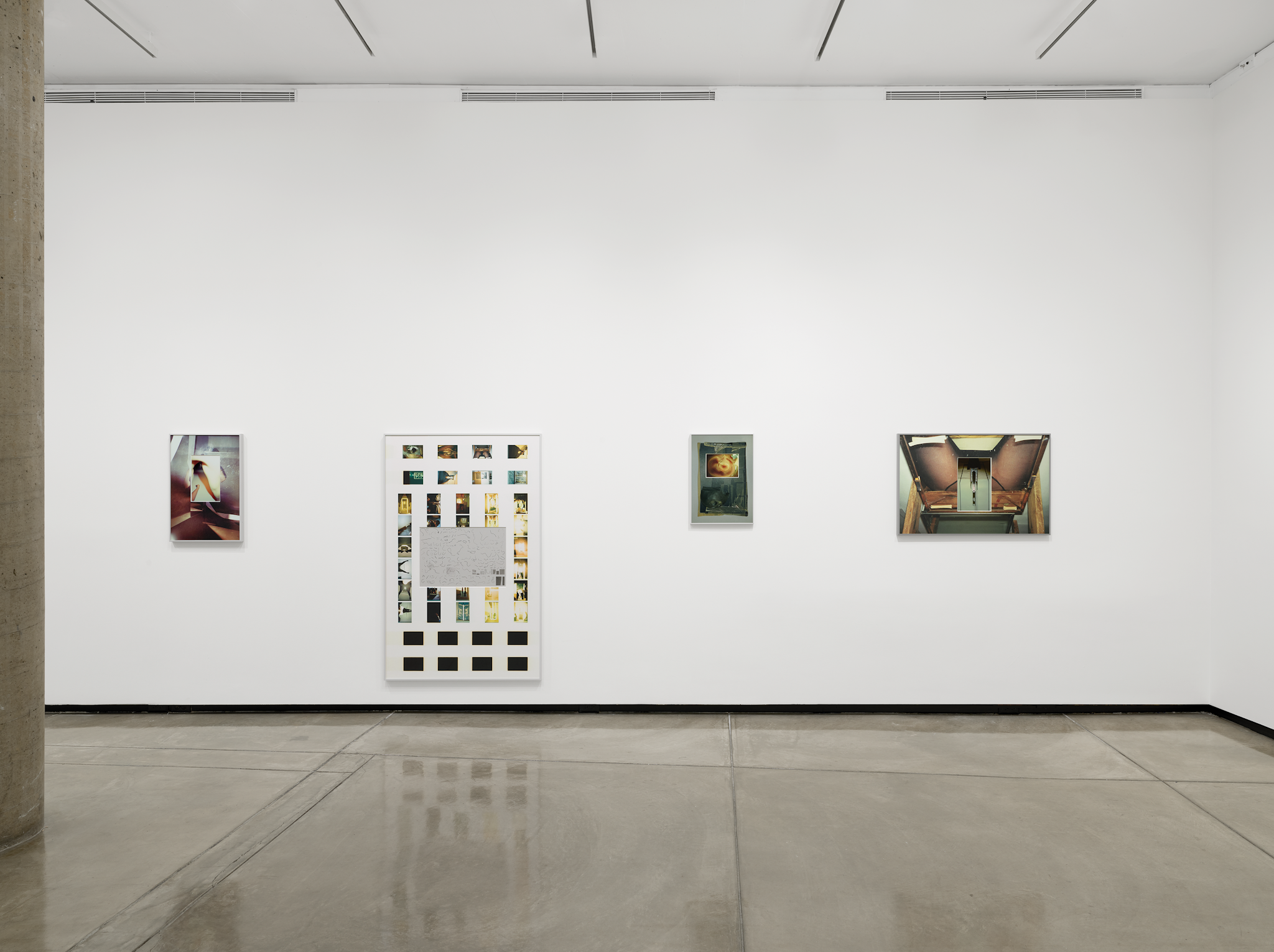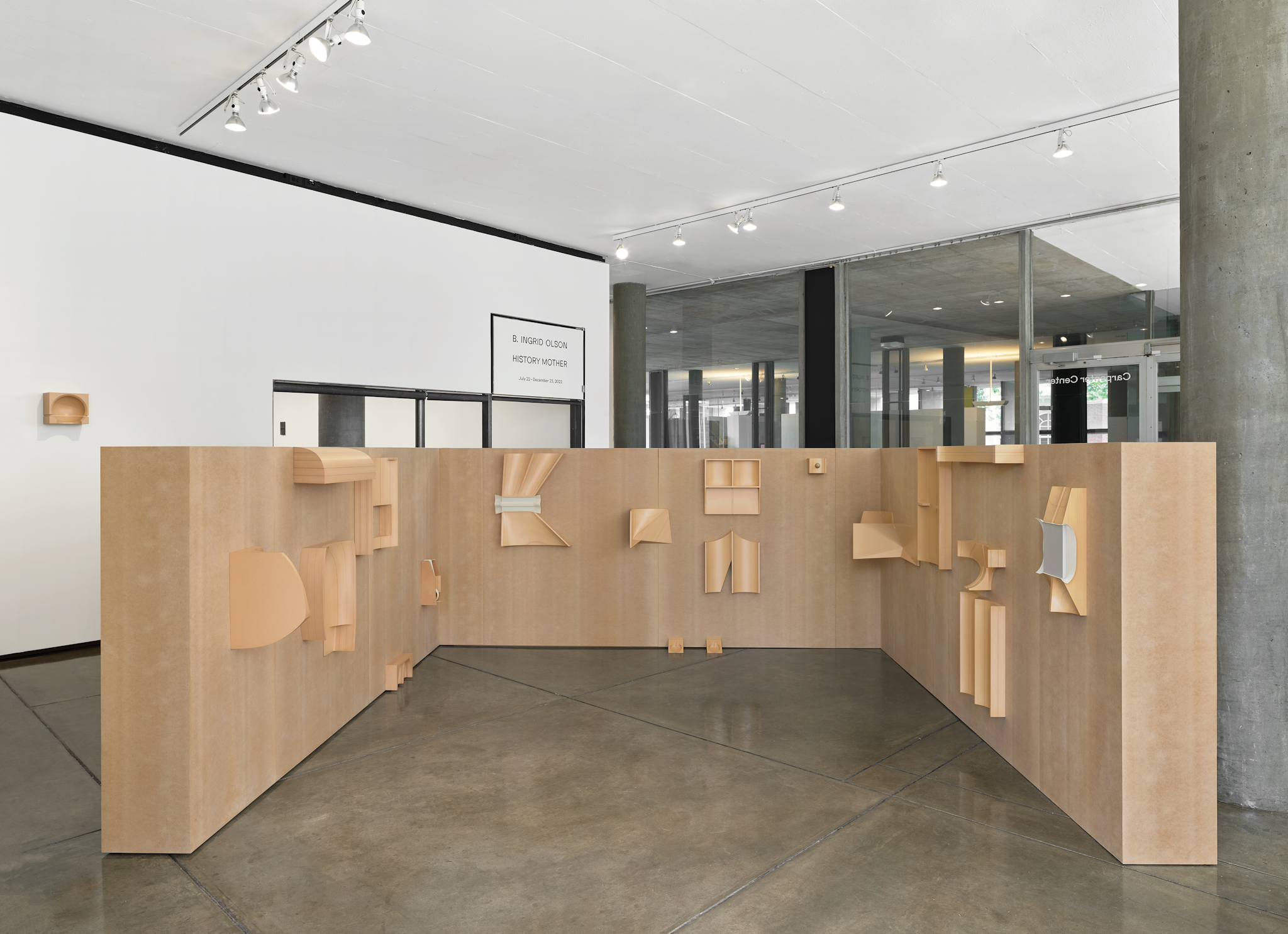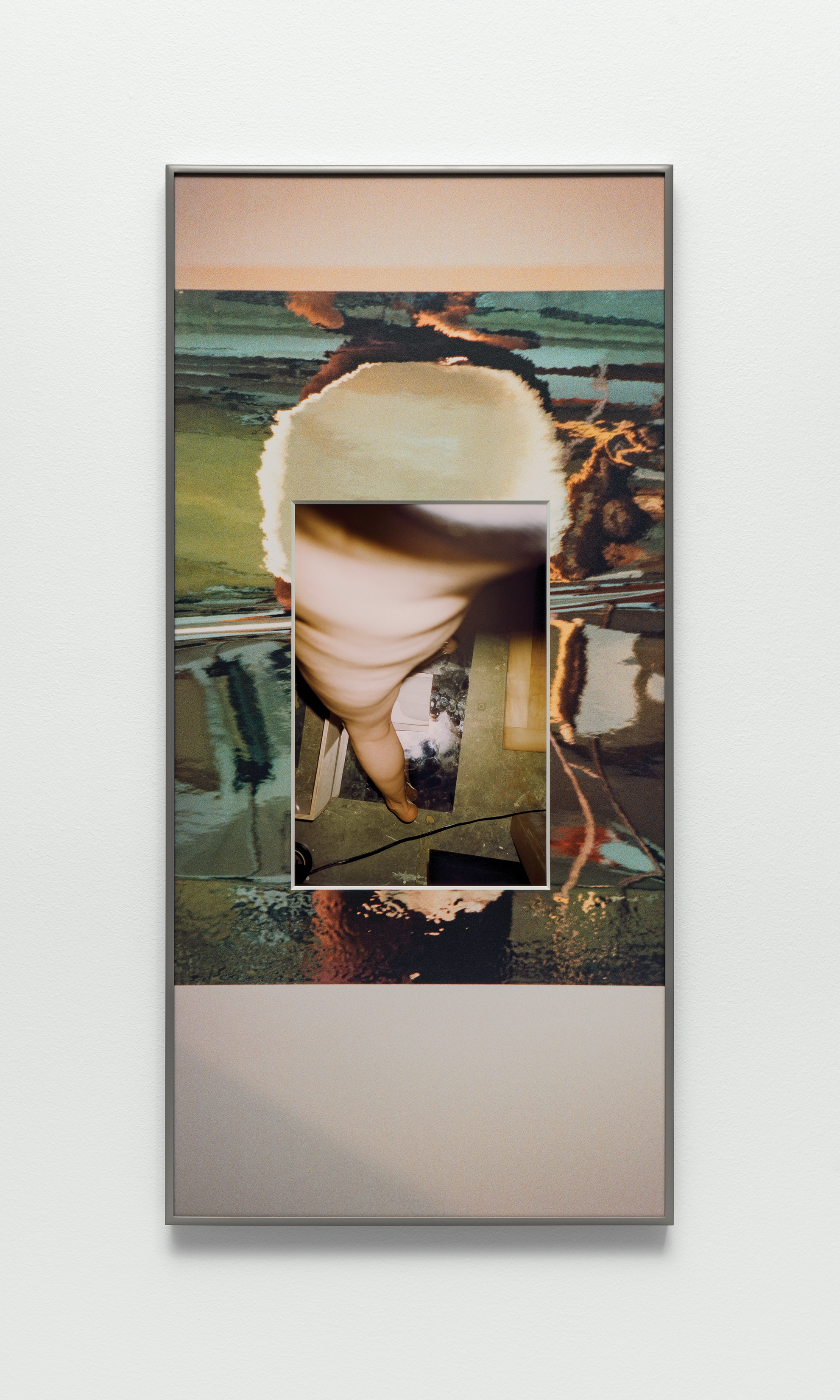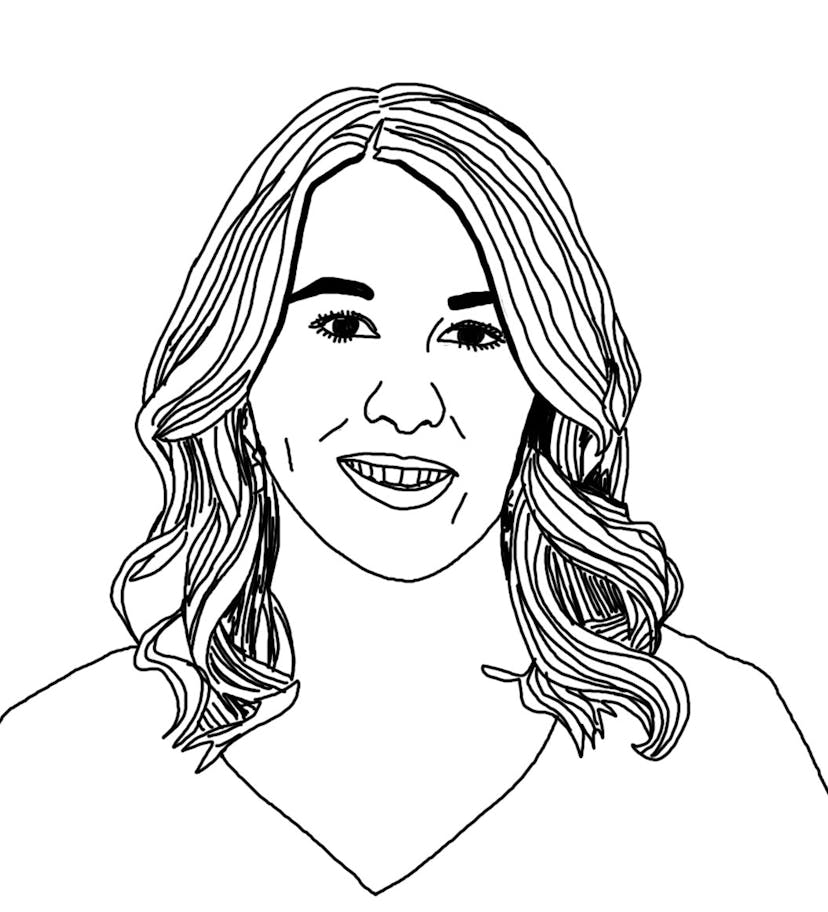In her two simultaneous solo shows at the Carpenter Center for the Visual Arts (CCVA), B. Ingrid Olson and curator Dan Byers present a cerebral funhouse of sculptural, photographic, and architectural work. Working collaboratively, Olson and Byers present multiple ways of reading the holistic project depending on where one begins their journey in the CCVA’s Le Corbusier–designed space. If one wishes to follow chronology, beginning with the “retrospective”-style “History Mother” on the third floor makes most sense. But those who begin on the first floor are greeted by “Little Sister,” which features new site-specific works. Though the CCVA clarifies that these are two separate exhibitions, it is difficult not to see the parallels between them. The consistencies in Olson’s practice make “Mother” and “Sister” feel like, as their names suggest, two parts of one larger family.
While the term “unconventional ‘retrospective’” is used in the exhibition’s accompanying pamphlet to describe “History Mother,” it is odd to consider after a decade or so in practice, it is already time to look retrospectively at this body of work—perhaps it’s more of a reimagining or revision. “History Mother” consists of two distinct parts: a commanding U-shaped structure, titled Proto Coda, Index (2016–2022), that is reminiscent of a cubicle covered in and surrounded by sculptural pieces, and a series of photographic works in an adjacent gallery. The pieces in Proto Coda, Index are reproductions of all the sculptural reliefs Olson has made to date, which, according to the pamphlet, are meant to evoke “fragments of the human form in their measurements and symmetries.”
These forms do not reveal themselves easily. Without clear labels or exhibition text—something consistent throughout both shows—the viewer might feel as though they are on a scavenger hunt with the accompanying pamphlet. It takes a moment, but eventually a set of feet appears, then a pair of legs, then a pattern to reading these forms emerges. The way these works are placed matters, too; part of the allure of Olson’s work here is that its placement follows a logic that is in proportion to the artist’s body. Similarly to the photographic works in the next room, Olson scatters pieces of herself throughout the space, creating a throughline from one room to the other.
“I’m often trying to make some portion of the body, my body, as minimal as possible to take away as much detail as possible, and then add the little flourishes back in that might make the shadow appear so that what I’m thinking of is revealed,” Olson says on a recent episode of The Modern Art Notes Podcast about this work. While this sentiment is specific to Proto Coda, Index, it’s an approach that is repeated in many of the other works in both exhibitions.
The adjoining Sert Gallery primarily features layered photographic works in which one image is used as the mat for another image. A literal example of the doubling effect that Olson repeats in her work, the nesting of these photographs creates confusion and leaves room for interpretation. Yet here, the uniform (and decidedly low) hanging of the work and the repetition of the medium creates an uneven visual rhythm that competes with the disorder contained within the images. In the cleverly titled !¡! (2021–2022), the mat or exterior frame is an image of a pair of legs photographed from below, while the interior image is an odd metal contraption suggestive of a phallus. Playing with its voyeuristic suggestions, this work has a cheekiness—a sort of “got you!” moment as one tries to discern what the interior object is—that seems impossible to convey without this frame-within-frame approach. Olson collapses the traditional frame and perspective in photography in a way that opens up many possible meanings.
We often expect that photographs will offer us certain truths about the subject or that the photographer will stake a claim about the world at large. While “History Mother” and “Little Sister” offer opinions, Olson’s approach to photography is like playing a game of telephone. When coupled with her sculptural practice in this manner, the photographs themselves become structures and thus more ambiguous. Certainly, the two media can stand on their own, but they reinforce each other here in a way that suggests Olson’s practice lives somewhere in the murky middle.
“Little Sister” presents a more guarded Olson, putting up both metaphorical and literal walls between object and viewer. Toward the back of the space, Door Picture, a view in perspective close together (2021–2022) is a prime example of this restrained intimacy. Referred to as a “corridor-like space” in the text, Door Picture features white plexiglass walls that obstruct the view of a photograph of the artist’s body on one side, and affixed to the “back” of the structure, a plexiglass frame fully reveals another photograph that faces the exterior of the building. To view the latter image, one must carefully squeeze between the object and the window, implying the adjacent outdoor patio is the optimal viewing angle. Door Picture encourages the viewer to play voyeur, asking us to adjust our vantage point until we can see what appears to be an image of the artist on the floor with legs open. Even then, it’s difficult to fully see the interior image. The plexiglass “blinders,” as the text calls them, are repeated in other works in the space, like Why does my vestibule hurt? (2020–2022), which obscures a curious interior featuring steel reamers and small sculptural pieces draped over the metal skeleton. Sitting atop a concrete bench between the two structures is Camera, Swans, Juliet (2020–2022), an elegant phallic/clitoral object that features shells of unfertilized swan eggs on each end. It has a power of recognition that some of the other works lack, signaling Olson’s interest in gender signifiers and gender fluidity.
In paying close attention to the arrangement of objects in a space and in stripping context from the work, Olson seems more interested in how we behave in the space and what we see in the objects. In The Modern Art Notes Podcast, she cites poetry as sort of literary equivalent to her practice. If we view her work through this lens, it makes sense why the work on view asks so much of us. Olson provides the compressed visual, the minimum she feels we need to make meaning, and asks us to fill in the rest. That’s why these shows may unfold differently for each of us, and why they are not the type that provide instant gratification.
“B. Ingrid Olson: History Mother, Little Sister” is on view at the Carpenter Center for the Visual Arts at Harvard University from July 22 to December 23, 2022.



